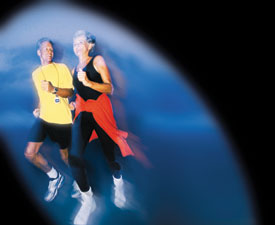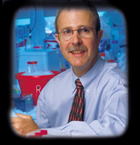The University of Texas Southwestern Medical Center at Dallas
Did you know�..
Coronary heart disease (CHD) is the number one killer in the United States.
 The National Heart, Lung and Blood Institute of the National Institutes of Health reports that more than 500,000 Americans die of heart attacks caused by coronary heart disease each year. CHD is one of the greatest risk factors for heart failure. More than 2 million Americans have CHD, and 400,000 new cases are diagnosed each year. There is no known cure for damage to the heart muscle caused by CHD and heart failure. However, research has shown that regular, modest exercise can be a factor in controlling the risks of CHD and heart failure.
The National Heart, Lung and Blood Institute of the National Institutes of Health reports that more than 500,000 Americans die of heart attacks caused by coronary heart disease each year. CHD is one of the greatest risk factors for heart failure. More than 2 million Americans have CHD, and 400,000 new cases are diagnosed each year. There is no known cure for damage to the heart muscle caused by CHD and heart failure. However, research has shown that regular, modest exercise can be a factor in controlling the risks of CHD and heart failure.

Dr. R. Sanders Williams
| A recent discovery by a team of researchers led by Dr. R. Sanders Williams, chief of cardiology at The University of Texas Southwestern Medical Center at Dallas and director of the Donald W. Reynolds Cardiovascular Clinical Research Center, has pinpointed the biochemical reactions that create the health benefits gained from exercise. Dr. Williams, director of the Frank M. Ryburn Jr. Cardiac Center, knew that the health of patients improved during rehabilitation therapy even though their hearts were not repaired, and he was determined to figure out |
| how genes control and alter muscles important to health. His work paid off last year when his team announced it had learned why weightlifters develop more of a muscle fiber called fast twitch and long-distance runners exhibit more of one called slow twitch. Equipped with this knowledge, Dr. Williams is confident that researchers can create a drug to mimic some effects of endurance exercise. |